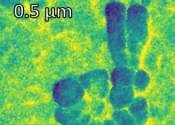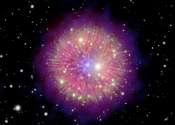Researchers make first perovskite-based superlens for the infrared
Superlenses earned their superlative by being able to capture the "evanescent" light waves that blossom close to an illuminated surface and never travel far enough to be "seen" by a conventional lens. Superlenses hold enormous ...









